#the philodendron brazil
Text


Two of my monsters. The one on the left was $150 at the time of purchase. The one on the right was $25.
@anotherhitandrun @heavymetallibrarian @80sphase @hungercityhellhound
13 notes
·
View notes
Text
Indoor garden update before I go to the nursery tomorrow:

Shelf is doing good!!
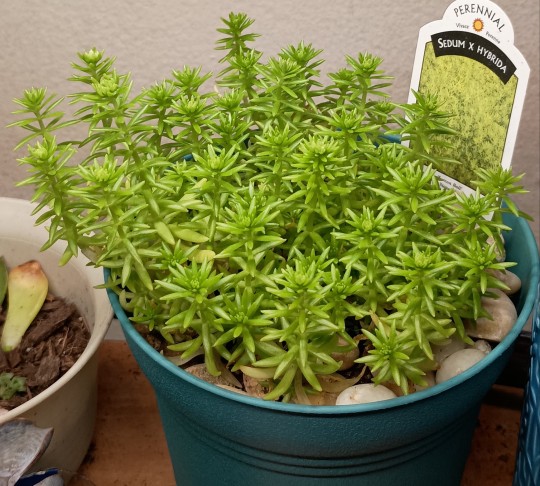
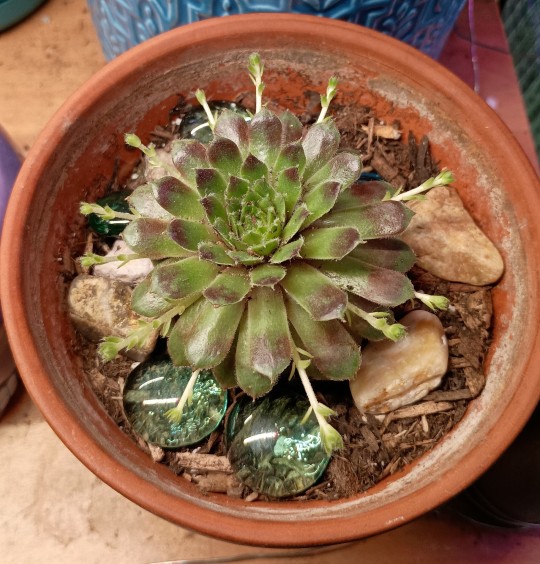
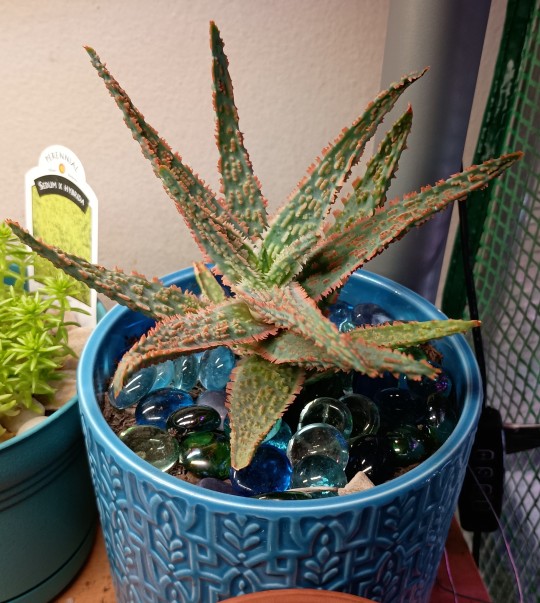
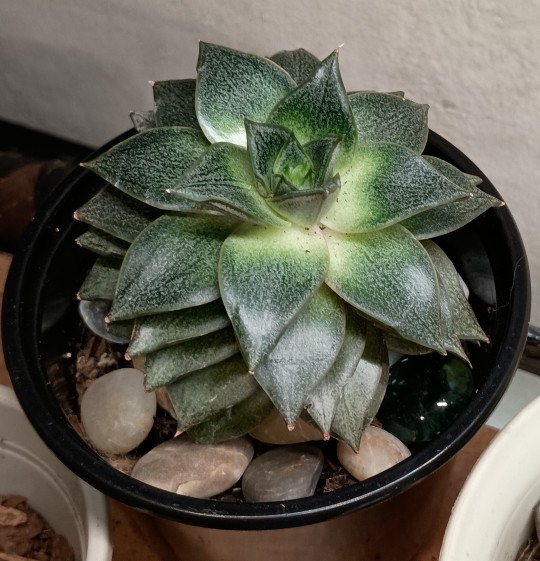
And my succulent shelves are sooo pretty!!
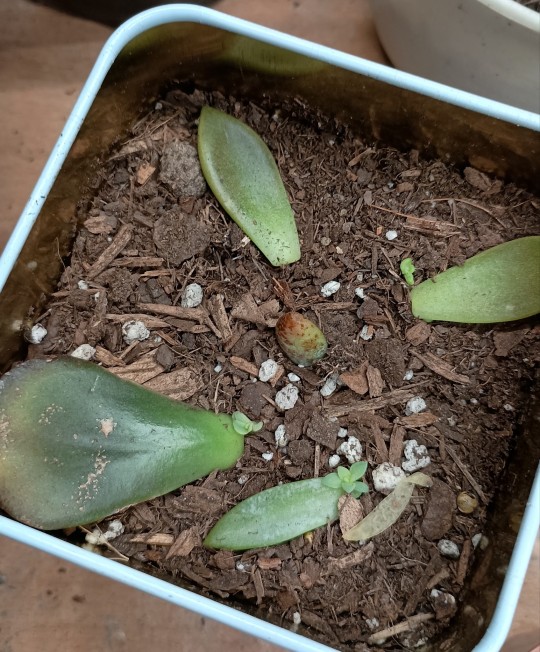

I also have some little propagations :3 they're so tiny and adorable!!!!!
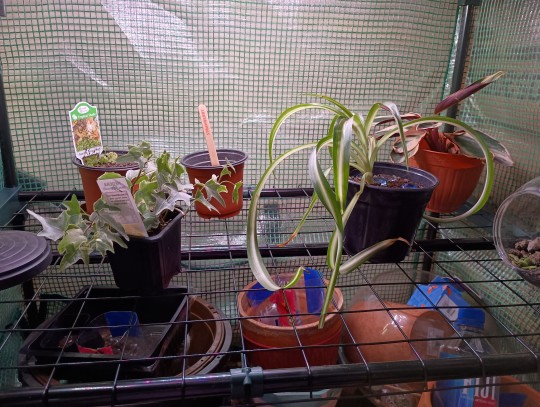
And in the greenhouse, my ivy is thriving!! The others haven't had much change

And my Moses in the cradle loves the greenhouse too!! She started growing so much more when she went in there, and I think the Brazil philodendron and polka dot plants like it too !!

It's so hard to get a good picture of this shelf but the anthurium is loving the greenhouse! I haven't noticed much change in the others though, maybe the string of turtles' leaves got a bit thicker?
Also my cats are pretty happy with their little garden! That's all until tomorrow eheheheeee bye:3
#indoor plants#plants#spider plants#spider plant#snake plant#sedum#sedum lemon ball#aloe plant#pink blush aloe#hen and chicks#succulent plant#succulents#plant propagation#ivy#calathea#string of bananas#string of turtles#tradescantia#moses in the cradle#brazil philodendron#philodendron#anthurium#schefflera#mini umbrella plant
0 notes
Photo


philodendron oxycardium variegated “Brasil”
フィロデンドロン・オキシカルジウム「ブラジル」
#フィロデンドロン#フィロデンドロン・オキシカルジウム#ブラジル#斑入り#philodendron#oxycardium#brasil#brazil#leaf#green#houseplants#indoorplants#観葉植物
0 notes
Text
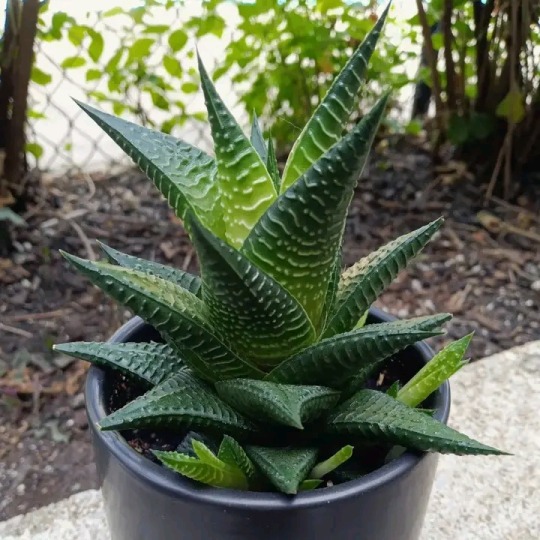



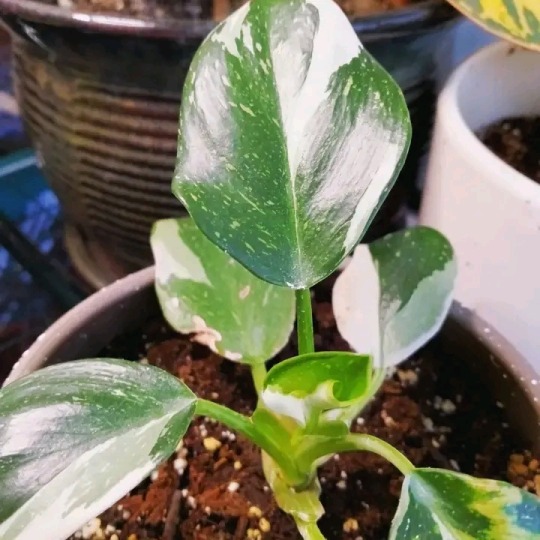
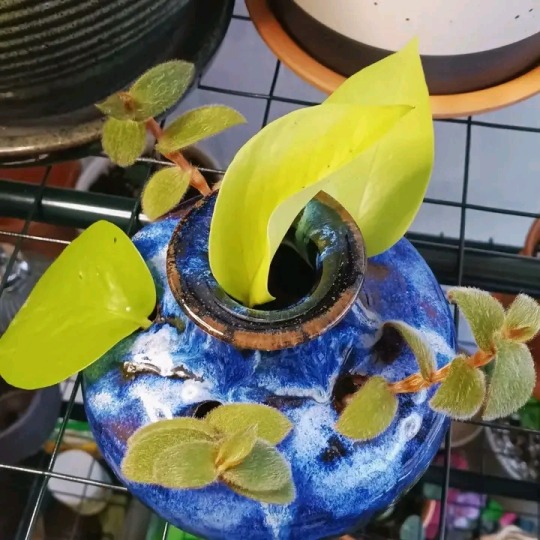
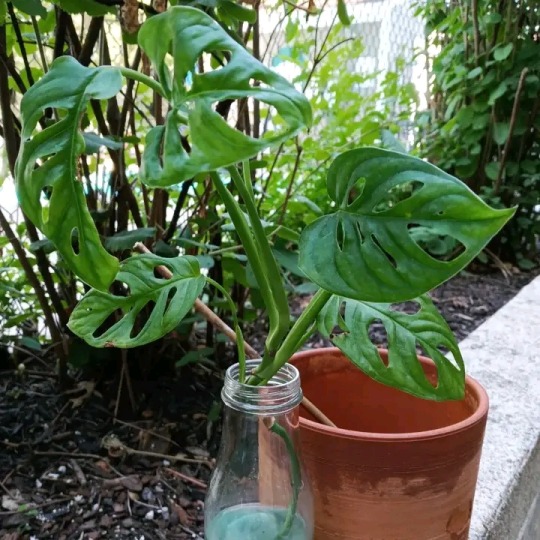
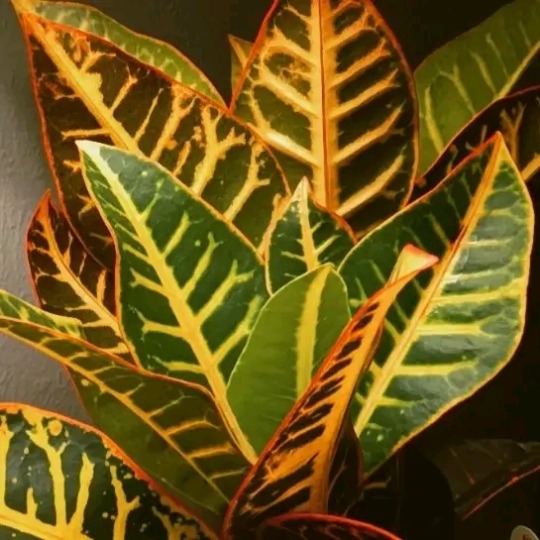

January 10th is Houseplant Appreciation Day! 💚
I am so thankful to have found such a fascination and love for taking care of plants. I have enjoyed plants since I was little, but it wasn't until I brought home an aloe vera the summer of 2021 when I felt my connection to plants really blossom. They give me so much joy, especially whenever I bring a plant home that isn't feeling so well and I get to provide the nourishment it needs to watch it bounce back up. We are about halfway through the cold season, and once the cold and dark hours lighten up, I am excited to see what growth my plants and I will achieve this year. 💚 I'm hoping to post more original posts onto this side blog as well!
🪴 Plants in photos in order of appearance:
Zebra haworthia
Heartleaf vine, Brasil/Brazil var.
Green Global pothos
Coleus
White wizard philodendron
Propagation pot with teddy bear vine and neon pothos
Monstera adansonii, "Swiss cheese plant."
Petra croton
Teddy bear vine
#houseplants#plantblr#haworthia#pothos#monstera#philodendron#croton#vining plant#succulents#mine#tag later
6 notes
·
View notes
Text
lets gooooo, plant count 2023 - these are all the plants i currently have alive, propogating, or dead/dying. plant care isnt always easy and there sometimes are casualties but you bounce back! sometimes that plant just isnt meant for your home/lifestyle and that is okay! find another one! they can die and the sun still will rise and you'll try again.
Alive:
string of bananas
string of hearts x2
string of heart variegated
string of pearls
string of arrows
string of watermelons x2
string of turtles
burros tail
Callisia repens Gold (Turtle Vine)
Tradescantia mundula ‘Tricolor’? (it was a cutting and it looks a lot more pink than most tricolors i see sooo ??? maybe another variant)
neon pothos x3 (one on moss pole)
zz plant x2
small snake plant variety?
Tradescantia zebrina
random cutting from floor of home depot ?? that i potted up
Red Prayer Plant
pink princess philodendron
white wizard philodendron
schflerra varigated x2
Aglaonema siam x2
Aglaonema ‘Lady Valentine’
monstera adasonaii (on a moss pole)
plain green pothos x2 (one on a moss pole)
polka dot plant 3 color varieties (pink,red,white)
philodendron brazil
Propagating:
Tradescantia 'Callisia repens'
Callisia repens Gold (Turtle Vine)
Tradescantia albiflora-
Tradescantia zebrina
burros tail
string of pearls variegated
red polka dot
white polka dot
monstera adasonaii
philodendron brazil
silver stripe philodendron
cream splash philodendron
monstera siltepecana
mystery node~
Dead/dying: :(
ficus tineke - dying, forgot about it lmao and its thirsty
monstera adasonaii - dying, repotted too close to winter lmao
fittonia pink angel - casualty of ransomware week
fittonia pink anne - died of ?? bad seller tbh
basil - casualty of ransomware week
tradescantia abiflora - casualty of bad soil
tradescantia zebrina - casualty of bad soil
philodendron brazil - casualty of bad soil
peppermint - casualty of thirst
#that round of bad soil took a lot of soldiers :(#bizzies botanicals#plant stuff#my one regret is repotting my monstera :(#she was so beautiful#but i am propping the healthy part#long post
6 notes
·
View notes
Text
i wish plants were a more engaging hobby, i want to fiddle around with them more but they tend to not like that so much at all (exhibit a: red congo philodendron i decapitated last night. exhibit b: monstera i sent into a two month coma due to fiddling that she seems to be waking up from but i'm not sure. exhibit c: philodendron brazil i straight up killed. exhibit d: monstera monkey mask i straight up killed. exhib
4 notes
·
View notes
Note
I love houseplants too! Tell me of your precious houseplants!
they're so fun! i don't have that many but i wish i did 😭 i have a couple pothos, a couple monsteras (fingers crossed my main one pulls through after its second fall..), philodendron heart leaf and brazil, a dying spider plant and i bought an alocasia last week that's has NOT been enjoying the change of scenery lmao i like the pothos' the most just cause they're so easy to care for and they grow so fast it's free plant forever
#in total i only have 22 and a shit ton of cuttings.. i really wanna get more and live in a jungle lskjslkhdt#anon#asks
5 notes
·
View notes
Text
Top 10 Low-Light Indoor Plants for Brightening Every Corner
Introduction:
In the world of indoor gardening, finding the right plants for low-light conditions can be a game-changer. Whether you live in a dimly lit apartment or have a room with limited sunlight, there are plenty of plant options that can thrive in these environments. In this article, we'll explore the top 10 low-light indoor plants that not only survive but thrive in less-than-ideal lighting conditions, bringing life and greenery to every corner of your home.

Snake Plant (Sansevieria trifasciata):
Snake plants are renowned for their resilience and ability to thrive in low-light conditions. They have striking, upright leaves that come in various shades of green and yellow, making them a stylish addition to any space. Plus, they're excellent air purifiers, helping to improve indoor air quality.
ZZ Plant (Zamioculcas zamiifolia):
ZZ plants are virtually indestructible and can tolerate low light, drought, and neglect with ease. Their glossy, dark green foliage adds a touch of elegance to any room, making them a popular choice for low-light spaces.
Pothos (Epipremnum aureum):
Pothos, also known as Devil's Ivy, is a versatile and easy-to-care-for plant that thrives in low to moderate light. With its cascading vines and heart-shaped leaves, pothos is perfect for adding greenery to shelves, mantels, or hanging baskets.
Peace Lily (Spathiphyllum):
Peace lilies are known for their graceful white flowers and lush, dark green leaves. They can tolerate low light but will also appreciate some indirect sunlight. Peace lilies are not only beautiful but also excellent at purifying the air, making them ideal for bedrooms or offices.
5. Spider Plant (Chlorophytum comosum):
Spider plants are classic indoor plants known for their arching foliage and spider-like plantlets that dangle from long stems. They thrive in indirect light and are great for hanging baskets or as tabletop plants.
6. Chinese Evergreen (Aglaonema):
Chinese evergreens are prized for their colorful and variegated leaves, making them a popular choice for low-light interiors. They come in various shades of green, silver, and even red, adding a pop of color to any space.
7. Cast Iron Plant (Aspidistra elatior):
True to its name, the cast iron plant is incredibly tough and can tolerate low light, dry air, and neglect. Its dark green, leathery leaves add a touch of sophistication to any room, making it a favorite for offices and lobbies.
8. Philodendron (Philodendron):
Philodendrons are versatile plants that come in a variety of shapes, sizes, and colors. Many philodendron varieties, such as heartleaf philodendron and Brazil philodendron, can thrive in low-light conditions, making them perfect for beginners or those with less-than-ideal lighting.
9. Dracaena (Dracaena):
Dracaenas are striking indoor plants with tall, sword-shaped leaves that can tolerate low to moderate light conditions. They come in various sizes and shapes, making them suitable for both floor plants and tabletop displays.
10Maidenhair Fern (Adiantum):
Maidenhair ferns are delicate and graceful plants with feathery foliage that adds a touch of elegance to any room. While they prefer higher humidity, they can tolerate low-light conditions if kept consistently moist, making them perfect for bathrooms or kitchens.
Conclusion:
With the right selection of low-light indoor plants, you can transform even the darkest corners of your home into thriving green spaces. Whether you prefer sleek, modern foliage or lush, tropical vibes, there's a low-light plant out there to suit your style and space. So don't let a lack of sunlight hold you back—brighten every corner of your home with these resilient and beautiful indoor plants.
0 notes
Text
Philodendron Tortum: Care and Cultivation Guide
The Philodendron tortum M.L.Soares & Mayo is a rare species belonging to the Araceae family. Its bizarre and distinctive appearance, reminiscent of a Cycas palm to some, though entirely unrelated, makes it highly valued for adding a touch of originality to indoor green spaces in homes and offices. With its light and essential bearing, deeply sculpted and skeletal leaf blades, it is ideal for decorating any indoor environment, even those with low light exposure. Over time, the plant adopts a climbing habit (or trailing if left unsupported).

Care for Philodendron Tortum
Philodendron tortum is a relatively new and somewhat mysterious plant, but caring for it is not complex. I've found it to be quite forgiving, even when I've been a bit 'neglectful'. Below are some guidelines for proper care.
How Much Light Does Philodendron Tortum Need?
Philodendron tortum prefers domestic locations with abundant diffused light. In winter, it can tolerate direct light, while in summer, it's better to shield it from direct sun rays, which it can tolerate only during early morning and late afternoon.
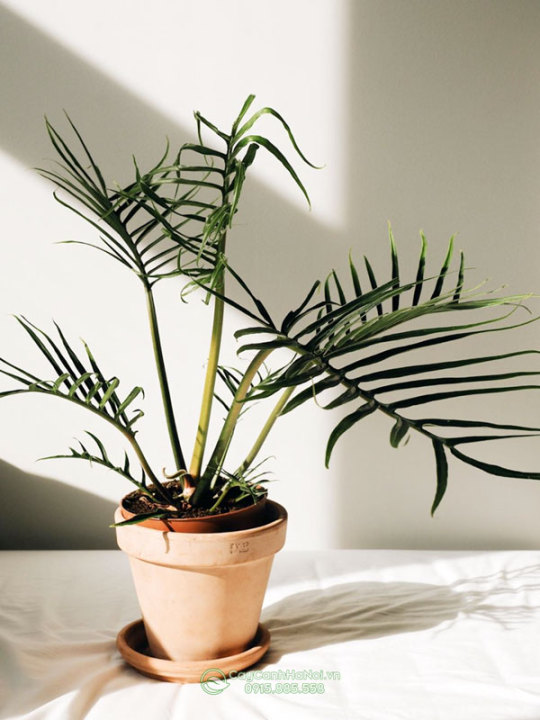
This plant also tolerates less bright spots in the house: always observe the plant's reaction over time and adjust if necessary. If the plant lacks adequate lighting for extended periods, like the 2-3 central months of winter, the leaves might fade.
Despite being native to Brazil, where you might expect it to need very sunny positions, as a plant that grows naturally as a semi-epiphyte, it is accustomed to the shade provided by the canopies of larger trees.

My P. tortum specimen is assisted by grow lights during winter, not because it required it, but because it is part of a group of plants that I keep illuminated. Actually, Philodendron tortum has never given me any problems despite having only light coming from a large but north-facing window.
Ideal and Minimum Temperatures for Philodendron Tortum
The ideal temperature range for Philodendron tortum is around 15-25°C (59-77°F).
Philodendron tortum tolerates temperatures down to 10-12°C (50-54°F), below which it exhibits stunted growth. Wilting and death can occur if exposed to excessively cold temperatures for extended periods.
Inside a home, it's best to avoid placing it near cold drafts or heat sources, such as air vents or heaters.
How Often to Water Philodendron Tortum

It's important to keep the soil slightly moist. Usually, it's best to water again when the top few centimeters of soil have dried out. Opting for sub-irrigation is always a good practice to avoid root collar rot and often prevents mold formation on the soil.
Does Philodendron Tortum Need Misting?
Although originally from the rainforest, I've noticed that P. tortum adapts well to the average humidity levels found in homes (40-60%). Therefore, using sprayers or humidifiers is not usually necessary.
What Soil to Use for Philodendron Tortum?
Philodendron tortum prefers very draining and light soils. I grow mine in One Plus substrate with excellent results.
Alternatively, considering its semi-epiphytic nature, you could grow it in orchid bark, perlite, or sphagnum moss, even mixed together. All these products are available in our shop.
How to Fertilize Philodendron Tortum?
You can use a fertilizer for green plants diluted in the watering water; I use GranVerde by Cifo. It does not have high nutritional needs but appreciates regular fertilizations and the use of biostimulants, especially in the spring months. For more information about biostimulants, refer to the post on the subject.
0 notes
Text
I went to a plant show yesterday and I am so excited for the new additions I brought home! First table I stopped at had amazing stuff right off the bat. I picked up a hoya compacta varigated, a little ludisia discolor jewel orchid (pictured next to the two jewel orchids I already had), and the one I'm most excited about: a philodendron white wizard!

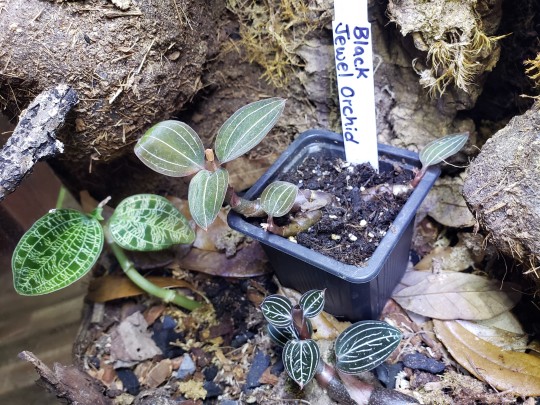
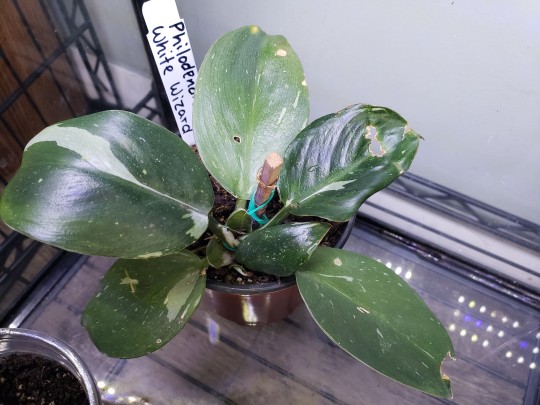
Then I found yet another wishlist plant, an epipremnum pinnatum albo! Just a rooted single leaf cutting but I'm still so excited to see it grow.
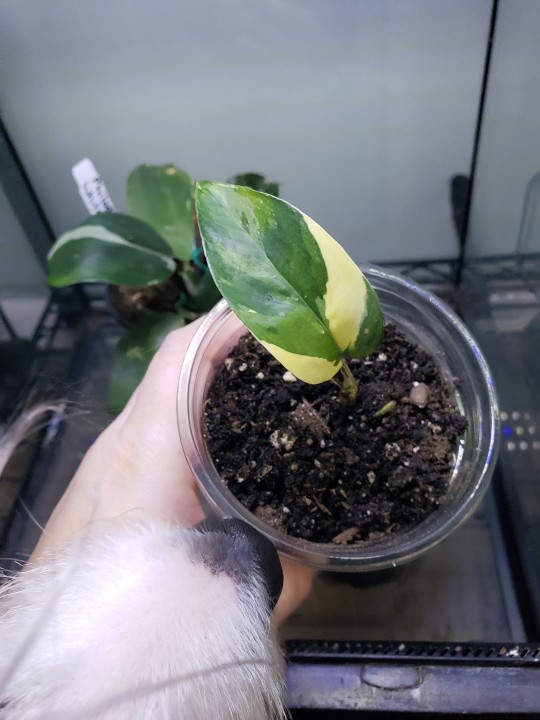
Enjoy a bonus Nilly nose inspecting the goods.
This hoya was unlabeled but super interesting looking. I think it's a crassipetiolata with some splash but I could be very wrong. The guy running the booth was swamped with customer questions and his assistant who cashed me out (I think she was his mom) didn't know the names of anything.

Also, took a chance on a tiny rooted cutting of philodendron rio. Not much white on it right now, but it was cheap and it's literally the only time I've seen one available in person. Here's hoping it does as fabulously as my brazil.
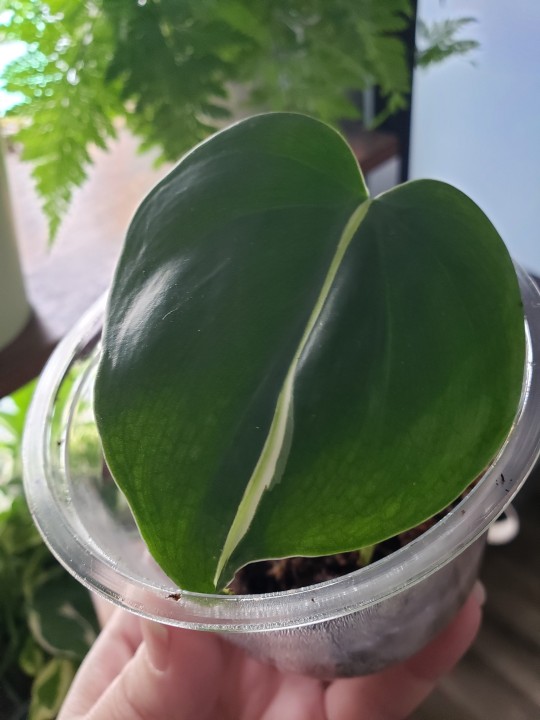
Last tiny why not impulse plant was an itty bitty lithops. He's the size of a pencil eraser! Never had one of these guys before but I've enjoyed seeing other people get wildly excited whenever their little butt shaped rocks wake up and do something. He might be too tiny to survive but I'm gonna try.

All in all I had a great time and couldn't be happier with my haul!
1 note
·
View note
Text
Pink Congo Philodendron: A Comprehensive Guide In 2023

Are you ready to dive into the captivating world of Pink Congo Philodendron? In this comprehensive guide for 2023, we're about to unveil the secrets behind cultivating and caring for this stunning plant. Whether you're a seasoned plant enthusiast or just starting your green journey, this guide will equip you with the knowledge you need to nurture your Pink Congo Philodendron to perfection.
Pink Congo Philodendron: a true marvel of nature. With its vibrant pink leaves that seem to whisper stories of exotic rainforests, this plant has taken the gardening world by storm. So, what makes this philodendron stand out? How do you ensure its vibrant hues remain as enchanting as ever? We've got you covered. From propagation tips to ideal care routines, this article provides a sneak peek into the comprehensive insights awaiting you.
But these insights are not mere speculations; they're rooted in expertise. Our guide is curated by none other than Tochukwu Ezebube, the founder of Musana Garden. With over a decade of experience in gardening and a degree in Crop Production and Landscape Management from Nnamdi Azikiwe University, Tochukwu is a seasoned expert. Join us as we venture into the world of Pink Congo, guided by the wisdom of a trusted horticultural authority. Ready to elevate your gardening game? Let's embark on this verdant journey together.
What is Pink Congo Philodendron?

The Pink Congo Philodendron is a captivating and visually striking houseplant known for its stunning pink foliage. Originating from the tropical rainforests of South America, particularly from countries like Brazil, Colombia, and Ecuador, it belongs to the philodendron family. Its scientific name is Philodendron 'Pink Congo,' and it's a hybrid plant resulting from careful crossbreeding and cultivation.
The Pink Congo Philodendron stands out with its heart-shaped leaves that are vibrant pink, creating an immediate focal point wherever it's placed. As the leaves mature, they transition from pink to a beautiful shade of green, adding depth and dimension to the plant.
This plant has gained popularity not only for its aesthetic appeal but also for its benefits. Houseplants like the Pink Congo are known to improve indoor air quality by filtering out toxins and pollutants. Additionally, having indoor plants can contribute to reducing stress levels and enhancing overall well-being.
Origin and History
The pink congo philodendron hails from the tropical rainforests of South America, specifically from the countries of Brazil, Colombia, and Ecuador. It belongs to the vast philodendron family, a group of plants known for their lush foliage and ability to thrive in various environments.
Common Name
The pink congo philodendron is commonly referred to as the "Pink Congo," highlighting its stunning pink hue. This name perfectly captures the eye-catching and unique aspect of this particular philodendron variety.
Scientific Name
The scientific name of the pink congo philodendron is Philodendron 'Pink Congo'. It is a hybrid plant resulting from careful crossbreeding and cultivation.
Benefits
Aside from its obvious aesthetic appeal, the pink congo offers numerous benefits to its owners. Houseplants, such as this one, have been proven to have positive effects on air quality, as they help filter out toxins and pollutants. Moreover, studies indicate that having indoor plants can reduce stress levels and improve overall well-being. The pink congo is not just beautiful but also contributes to a healthier and more pleasant living environment.
Appearance and Characteristics
The pink congo philodendron displays striking features that set it apart from other philodendron varieties. Its heart-shaped leaves are a vibrant shade of pink, creating an instant focal point wherever it is placed. The leaves have a glossy and velvety texture, adding an extra element of elegance to the plant.
This philodendron variety can grow to impressive sizes, with mature plants reaching heights of up to 3 feet and spreading up to 2 feet wide. Its growth pattern is predominantly upright, creating a visually appealing display.
Unique Features
One of the most remarkable traits of the pink congo philodendron is its ever-changing foliage. As the leaves mature, they transition from a vibrant pink to a stunning shade of green. This natural color transformation adds depth and dimension to the plant, creating an ever-evolving spectacle of beauty.
Additionally, pink congo is a relatively low-maintenance plant, making it an ideal choice for both experienced and novice gardeners. It can adapt to a variety of light conditions, though it thrives best in bright, indirect light. This versatility ensures that the pink congo can flourish in various indoor settings.
Caring And Growing Guide
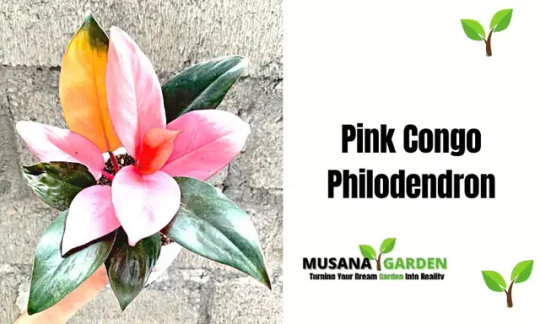
To ensure the health and longevity of your pink congo philodendron, it is essential to provide the proper care and growing conditions. Here is a comprehensive guide to help you nurture your plant:
Light Requirements
The pink congo philodendron thrives in bright, indirect light. Place it near a window where it can receive filtered sunlight throughout the day. Avoid direct exposure to intense sunlight, as it can cause the leaves to scorch and lose their vibrant color.
Watering
Consistent and adequate watering is crucial for the pink congo philodendron's well-being. Keep the soil slightly moist but not waterlogged. Allow the top inch of soil to dry out before watering again. Overwatering can lead to root rot, while underwatering can cause the leaves to wilt. Find a balance in watering that suits the plant's needs.
Temperature and Humidity
The pink congo philodendron thrives in temperatures between 60°F and 75°F (15°C - 24°C). It appreciates a moderately humid environment, so consider using a humidifier or placing a water-filled tray near the plant to increase humidity levels. It is important to avoid sudden temperature fluctuations or exposure to cold drafts.
Soil and Fertilization
Use a well-draining potting mix for your pink congo. A mixture of peat moss, perlite, and vermiculite provides a suitable growing medium. Fertilize the plant every two to four weeks during the growing season, using a balanced, water-soluble fertilizer diluted to half strength.
Pruning
Regular pruning helps maintain the shape and size of the pink congo. Trim any yellow or dead leaves to promote healthier growth. You can also pinch back the stems to encourage bushier growth.
Propagation
The pink congo philodendron can be propagated through stem cuttings. Take a 6-inch cutting with at least two aerial roots and place it in a jar of water or a well-draining potting mix. Keep the soil consistently moist and provide bright, indirect light. Roots should start to develop within a few weeks.
Common Pests And Diseases

Although the pink congo philodendron is relatively resistant to pests and diseases, it is still important to remain vigilant. Here are some common issues you might encounter:
Spider Mites
Spider mites are small pests that can cause significant damage to the plant. They typically appear as tiny red or yellow dots on the undersides of leaves. To combat spider mites, regularly mist the plant, keep the humidity high, and consider using natural insecticidal soap.
Mealybugs
Mealybugs are small, white, cotton-like insects that cluster in leaf axils and along the stems. They feed on sap, causing stunted growth and leaf discoloration. Remove mealybugs manually with a cotton swab dipped in rubbing alcohol or use an organic insecticidal soap.
Root Rot
Overwatering or poorly draining soil can lead to root rot, a condition where the roots become waterlogged and start to decay. To prevent root rot, ensure that the potting mix is well-draining and adjust your watering habits accordingly.
Leaf Spot
Leaf spot is a fungal disease characterized by brown spots on the leaves. Avoid overhead watering, as it can promote the growth of fungal spores. If a leaf spot develops, remove affected leaves and improve air circulation around the plant.
Comparison with other species and varieties
The pink congo philodendron often draws comparisons to other philodendron varieties, especially the Philodendron Pink Princess. While both plants exhibit stunning foliage, there are notable differences between them.
The Pink Princess features variegated leaves with splashes of pink, white, and green, creating a marbled effect. In contrast, the pink congo has solid pink leaves that transition to green as they mature.
Another distinguishing factor is the price. The Pink Princess is known for its high price tag due to its rarity and demand. On the other hand, the pink congo philodendron offers affordability without sacrificing the mesmerizing pink foliage.
While personal preference plays a significant role in choosing between the two varieties, the pink congo provides an excellent alternative with its unique charm and more accessible availability.
Pink Congo Philodendron for Sale
The pink congo philodendron has gained popularity among houseplant enthusiasts, and it is generally available for purchase at local nurseries, garden centers, and online retailers. When purchasing a pink congo philodendron, ensure that the plant looks healthy, with vibrant leaves and no signs of pests or diseases. It is always a good idea to support reputable sellers or nurseries to guarantee the quality of your plant.
Pink Congo Philodendron Price
The price of the pink congo philodendron can vary depending on factors such as plant size, availability, and location. Typically, smaller specimens can range from $20 to $50, while larger, more established plants can cost upwards of $100. Keep in mind that prices may fluctuate, so it is advisable to research and compare prices from different sellers before making a purchase.
Philodendron Pink Congo vs Pink Princess
The pink congo and the Pink Princess are two distinct philodendron varieties that often captivate indoor plant enthusiasts. Here's a brief comparison between the two:
Philodendron Pink Congo:
- Solid pink leaves that transition to green as they mature.
- More affordable compared to Pink Princess.
- Offers vibrant and eye-catching foliage.
- Relatively easier to find and purchase.
Philodendron Pink Princess:
- Variegated leaves with splashes of pink, white, and green.
- Known for its rarity and high price tag.
- Features a marbled effect, creating a unique visual appeal.
- Higher demand among collectors.
Ultimately, choosing between the pink congo philodendron and the Pink Princess comes down to personal preference, budget, and availability.
Is Pink Congo Real?

Yes, the pink congo philodendron is indeed real. It is a cultivated variety resulting from careful hybridization and breeding. The stunning pink coloration of its leaves is what sets it apart from other philodendron varieties, making it highly sought after by plant enthusiasts.
Philodendron Pink Congo Reverting
Occasionally, a pink congo may exhibit a phenomenon called "reversion." Reversion refers to the plant reverting to its original green form instead of maintaining its signature pink coloration. This can happen due to a variety of factors, including unfavorable growing conditions, inadequate lighting, or genetic instability.
To prevent reversion, it is crucial to provide the pink congo with suitable growing conditions, including the right amount of light, proper watering, and sufficient humidity. Monitoring the plant's health and promptly addressing any issues that arise can help minimize the chances of reversion.
Conclusion
In conclusion, as you've delved into the vibrant world of gardening and explored the enchanting Pink Congo Philodendron, I hope this comprehensive guide has left you feeling inspired and well-informed. At Musana Garden, our dedication to nurturing beautiful and thriving gardens is unwavering. With a decade of hands-on experience and a deep-rooted passion for horticulture, we are committed to assisting you on your green journey.
Now, it's time to put your newfound knowledge to the test! ????
Interactive Question: Have you ever tried cultivating a Pink Congo Philodendron, or is it something you're considering for your indoor jungle? Share your thoughts and experiences with us in the comments below, and let's embark on this green adventure together! ????????
Read the full article
0 notes
Text
It's a jellycat easter<3

I also found the jellycat daisies at the conservatory!! And I got a polka dot plant, another spider plant, and a BRAZIL PHILODENDRON!!!! YIPPEEEEE
#happy easter#easter#jellycat plush#jellycat#little snake jellycat#birdling pigeon jellycat#sweetsicle bunny jellycat
0 notes
Text
And here are my non succulents, who sit upstairs on a stand in our big windows, except for my carnivorous plants who are in my sunroom.


Othello. Named by a former friend of mine. I switch between calling her a she or a collective they. I bought Othello when she was 2x smaller than she is now, from my local Food Lion not expecting much as she's my first plant that I owned, and that showed out and thrived, that is not a succulent. She has gone above and beyond my expectations and is what set off my love for pothos/vine type plants; now I cannot be stopped. She is the easiest for me to propagate and gift as pruning becomes a necessity because she grows without ceasing.
Genus/species: epipremnum aureum (neon pothos)
Owned for 192 days and counting
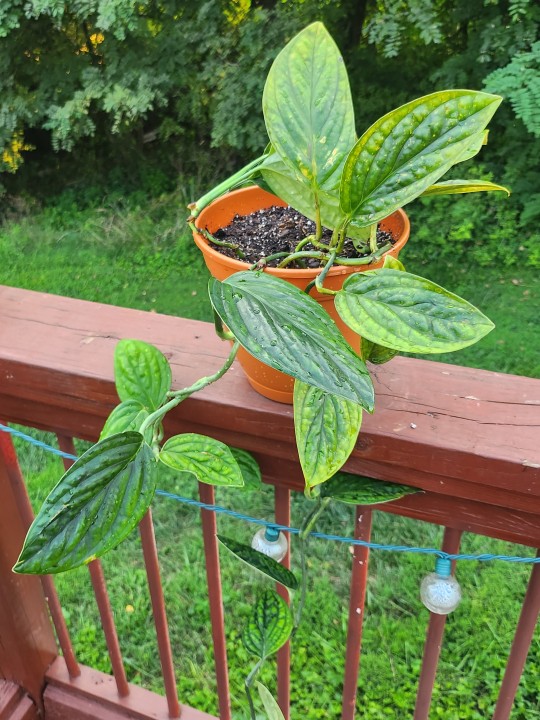

Brandi. Named by my same friends who named Winny as a play for brandy and wine. At first I had her in this large hanging basket like I put Othello in, expecting her to do as Othello did and thrive and fan out in the space quickly. Wrong. She wasn't doing poorly but she wasn't showing much growth (though she is a slow growing plant by nature anyways) save for alot of running vines that weren't growing any leaves on them. Finally having enough and really listening to her, I placed her in this smaller pot and cut off the excess runners. The relief I felt wafting from her afterwards was overwhelming and pleasant. I'm hoping she will begin to fill out more now that she's in better housing. The texture of her leaves is incredibly pleasing to me so rubbing them is a must whenever I check on her. She enjoys it too and likes to whisper conversation to me. She is one of my most quiet plants.
Genus/species: monstera karstenianum (monstera peru)
Owned for 164 days and counting
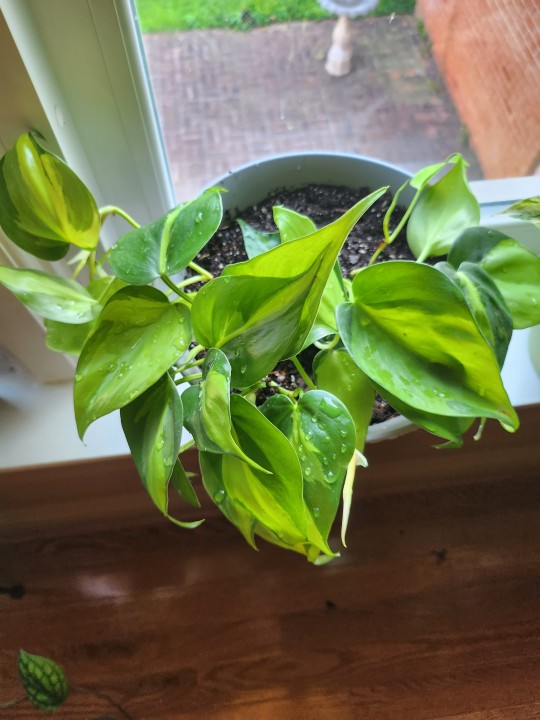
Petri. The newest of my plants and named by a friend of mine after the little pterodactyl from Land Before Time. (I'm surprised they didn't name him Spike instead because I imagine Spike would eat the HELL out of these leaves but Petri does fit better anyways imo) I look forward to this little guy growing out over time as he's of the pothos family! This is truly only the beginning of my downward mad descent into having oh sooooo many pothos.
Genus/species: philodendron hederaceum (brazil pothos)
Owned for a whopping 3 days and counting


Bunny/Mami. Joint named by me and a friend of mine. My friend liked the idea of Mami but to me Bunny popped in my head and stuck firmly so this girl goes by either name. My first carnivorous plant and I was so nervous at first but honestly she's a breeze to take care of. Give her good hot temps and mist her daily for humidity's sake and she is living it up in my warm sun room. When autumn comes around the anxiety will come back because I'll have to figure out the best place in the house to put her but we have a little ways yet. And she's enjoying herself out here with her fellow carnivore fellow. I got her to help with our fly/wasp problem in this house because my grandmother has yet to close off the chimney in the living room that everything keeps coming down through and then leaving the upstairs littered with fly carcasses. Bunny gladly takes them off my hands and turns them into energy to grow and make more pitchers.
Genus/species: nepenthes ventrata (pitcher plant)
Owned for a whopping 38 days and counting

Larva/Arv. Also joint named by me and the same friend who named Mami/Bunny. She said Larva because that's on the menu for carnivorous plants and I said, "Cute, I'll shorten it to Arv." This little one I kinda throw pronouns all around for. Much like myself, one day it's one thing and the next day it's another. Bunny's buddy in the sunroom, bought for the same reasons, cared for the same way. It's always a delight to feed them and watch the response of the mouths. Has quite the voracious appetite to be so small and has caught some creatures without my feeding them if said flies unfortunately find themselves trapped in the sunroom as well. I'll always keep Arv and Bunny together. They're a "NO PESTS!" duo now, and they like to have friendly competitions to see who can do the most control.
Genus/species: dionaea muscipula (venus fly trap)
Owned for a whopping 20 days and counting
0 notes
Link
Check out this listing I just added to my Poshmark closet: Philodendron Heartleaf Collection.
0 notes
Text


Thaumatophyllum xanadu
Филодендрон ксанаду
This plant was originally reported to be a selected chance seedling that arose in 1983 in a Western Australian nursery. It was thought to be a sport or hybrid of Thaumatophyllum bipinnatifidum, then called Philodendron bipinnatifidum, and named Philodendron 'Winterbourn' and protected under Plant Breeder Rights in Australia. It was also sold under the name P. 'Showboat'. It was renamed 'Xanadu' by House Plants of Australia and released as their plant of the year in 1988.
That name was trademarked in the United States using the cultivar name 'Winterbourn' on January 19, 1988. That patent has since expired and there are now substantiated claims that this plant is not a hybrid or nursery grown cultivar but actually originated from seed collected from a wild plant in Brazil.
Thaumatophyllum xanadu is a perennial plant belonging to the arum family Araceae and the genus Thaumatophyllum, formerly classified under the Meconostigma subgenus of Philodendron. This plant is native to Brazil, but is widely cultivated as a landscape plant in tropical, subtropical and warm temperate climates.
23 Rimutaka Place, Titirangi, Auckland 0604
3J4P+972 Auckland
-36.9441220, 174.6356310
0 notes
Text
Dehalogenation Of Polybrominated Diphenyl Ethers And Polychlorinated Biphenyl By Bimetallic, Impregnated, And Nanoscale Zerovalent Iron Pmc
Only the Java Fern will have to be planted, the remainder can float. If you’re on the lookout for plants for the highest of the container or to come out of the water, Brazil swords , philodendron cuttings, or arrowheads may fit for you…let me know when you want some other ideas. I just wished to know if Money plants are good for my betta fishes i've a small bow.
Remediation there's expected to price approximately $139 million . When completed, it is expected that water quality will improve, current restrictions on navigation might be removed, and economic returns will be generated by way of the creation of useful port lands. Peninsula Harbour, a mercury- and PCB-contaminated site in Canadian waters of Lake Superior, was remediated in 2012 with the placement of the primary skinny layer cap. On the biological exercise of benthic organisms with the general purpose of protecting organisms inside lake, river, estuarine and marine ecosystems. A number of approaches have been used which usually involve statistical comparisons of chemical concentrations in sediments and measures of antagonistic biological effects. Numerous sets of SQGs have been derived using completely different units of knowledge and/or completely different calculation methods.
Sugar-sized arrogate sand is the only sand you want to use because other grades might reduce the crab, and play sand might have dangerous fills. Use dechlorinated salt water to wet the sand to a "sand-castle" consistency. You also can use compressed coconut fiber (Sold as Eco-Earth or Jungle Bedding). Expand the coco-fiber in the same salt water you'd give your crabs to forestall mold/mildew. Substrates that crabs can't dig in, such as aquarium gravel or calcium sand aren't acceptable as a substrate. Your substrate should be at least 3-5 instances the height of your largest crab, and must be a cloth the crabs can simply dig and construct caves in to relieve stress, disguise, and molt.
These outcomes spotlight the want to conduct biodegradability assays at new websites, significantly when a number of contaminants and dehalorespiring populations are current. Tracing stable isotopes (δ²H and δ¹â¸O) from meteoric water to groundwater in the Densu River basin of Ghana. Enrichment and identification of polycyclic fragrant dechlorinators palm beach compound-degrading bacteria enriched from sediment samples. As do hydrochemical and isotope fractionation processes. Indicated a stratified IOB neighborhood with clear differences at quick vertical distances. Alpha- and Betaproteobacteria were the dominant phylotypes.
In silico strange differential equation/partial differential equation hemodialysis model estimates methadone removing throughout dialysis. Potential for enhancement of cardio organic elimination of recalcitrant natural matter in bleached pulp mill effluents. And no hysteresis was noticed dechlorinators palm beach in this experimental range for the 600 °C-heated samples. And in decreasing potential hurt to marine life when nearer to shore than contained in the plastic accumulation zones in the centers of the gyres.
Furthermore, these monocytes may be differentiated into functionally mature DCs. Compared to plastic adherence and immunomagnetic selection strategies, the elutriation process is inexpensive, efficient, and very effective. Multiplex real-time PCR for detection of Staphylococcus aureus, mecA and Panton-Valentine Leukocidin (PVL genes from selective enrichments from animals and retail meat. For Type II methanotrophs, suggesting the presence of upper numbers of Type II methanotrophs. These results present further proof for the existence of Type II marine methanotrophs, suggesting the risk of exploiting cometabolic exercise in marine systems. Amplification of marine methanotrophic enrichment DNA with 16S rDNA PCR primers for kind II alpha proteobacteria methanotrophs.
Hi Lauren, Spider crops ought to do fine in a vase-opening application, offshoots with roots already growing could be anchored in the to p of the vase and the roots should grow into the water. Hello Elley, That isn’t an aquarium plant but from the fundamental care directions I discovered on a Google search, it seems dechlorinators palm beach that it does not do properly when overwatered or if the soil stays wet for long. I wouldnt anticipate it to outlive in or on an aquarium. Hello Kristin, How typically do you feed it and what kind of food do you use? Are the scales protruding like a pinecone or clean to the body?
Here, we present experimental outcomes displaying the detection of E. Coli, Salmonella, or Listeria in a quantity of matrices utilizing the SERS system and demonstrate the accuracy of the strategy in comparison with plating outcomes. Process, and might be used as a surrogate for the more bodily based model. Recharge is essentially controlled by the vertical hydraulic conductivities of the fabric of the unsaturated zone. The vertical hydraulic conductivity coupled with humidity variations within the area modulates the vertical infiltration and percolation of precipitation.
The response kinetics and pathways counsel an H-atom switch mechanism. The response pathways with nZVI/Pd favor preferential removing of para-halogens on PBDEs and PCBs. X-ray fluorescence mapping of nZVI/Pd-AC showed that Pd primarily deposits on the outer part of particles, while Fe was current throughout the activated carbon particles. While BDE 21 was sorbed onto activated carbon composites shortly, debromination was slower compared to response with freely dispersed nZVI/Pd. We compared seep soils with nearby well-drained soils in two upland forested watersheds in Vermont that are sites of ongoing biogeochemical research.
0 notes